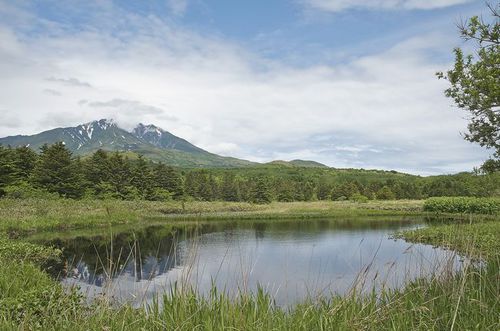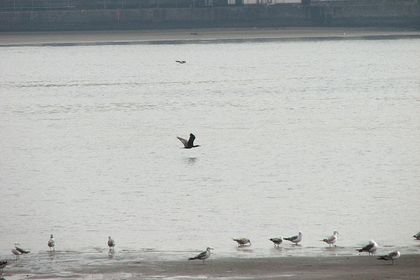July 29, 2014
Japan's Environment Ministry Assesses Economic Value of Wetland Ecosystem Services
Keywords: Ecosystems / Biodiversity Government Resilience

Imaeg by Travel-Picture Some Rights Reserved.
Japan's Ministry of the Environment (MOE) released on May 23, 2014, an assessment of the economic value that the country's marshes and tidal flats represented in fiscal 2013.
The importance of economic valuation of biodiversity and ecosystem services has been drawing great attention. One example is the final report on "The Economics of Ecosystems and Biodiversity" (TEEB) presented at the tenth meeting of the Conference of the Parties to the Convention on Biological Diversity (COP 10) held in 2010 in Nagoya, Aichi Prefecture.
The MOE has been taking the initiative for economic valuation of biodiversity and ecosystem services, in order to help all stakeholders recognize their value and to promote appropriate decision-making related to conservation and usage of ecosystems. As part of its initiative, the ministry conducted this assessment of wetlands, which have been degraded more seriously than other types of ecosystems in recent years in Japan.
Of several different types of wetlands, this assessment focused on marshes and tidal flats, which cover 110,325 hectares and 49,165 hectares, respectively, throughout the country.

Image by Shigemi.J Some Rights Reserved.
The approximate economic values of ecosystem services provided by marshes were assessed as follows:
○ Regulating services
Climate change regulation (carbon dioxide sequestration) -- 3.1 billion yen (approx. U.S.$30.1 million)
Climate change regulation (carbon storage) -- 98.6 to 141.8 billion yen (approx. $957.3 million to $1.4 billion)
Water regulation -- 64.5 billion yen (approx. $626.2 million)
Water purification (nitrogen capture) -- 377.9 billion yen (approx. $3.7 billion)
○ Habitat services
Provision of habitats and nurseries -- 180 billion yen (approx. $7 billion)
○ Cultural services
Preservation of natural landscapes -- 104.4 billion yen (approx. $1 billion)
Recreation and environmental education -- 10.6 to 99.4 billion yen (approx. $102.9 to $965 million)

Image by coniferconifer Some Rights Reserved.
The approximate economic values of ecosystem services provided by tidal flats were assessed as follows:
○ Provisioning services
Food -- 90.7 billion yen (approx. $880.6 million)
○ Regulating services
Water purification -- 296.3 billion yen (approx. $2.9 billion)
○ Habitat services
Provision of habitats and nurseries -- 218.8 billion yen (approx. $2.1 billion)
○ Cultural services
Recreation and environmental education -- 4.5 billion yen (approx. $43.7 million)
A simple total of the above shows that marshes provide ecosystem services worth 839.1 to 971.1 billion yen (approx. $8.1 to $9.4 billion) per year, and tidal flats 610.3 billion yen (approx. $5.9 billion).

Image by Yamaguchi Yoshiaki Some Rights Reserved.
This assessment was developed by compiling existing research data on ecosystem services, which deals with only a partial aspect of the value of marshes and tidal flats. The MOE hopes to improve it through more advanced research in the future, as it is meaningful to show the economic values of ecosystem services to the business sector, industries, and the general public.
Some are of the opinion that ecosystems and nature provide irreplaceable benefits that are priceless and cannot be given a price tag. However, it is also true that, in communicating with those impacting the environment through economic activities, showing the monetary value of ecosystem services is one of the most effective ways to convince them of these benefits and recognize the importance of environmental conservation.
Related
"JFS Newsletter"
- 'What Are the Roles of Zoos Today?' - Interview with Director of the Popular Asahiyama Zoo
- Nishiawakura's Initiative for 100% Energy Self-Sufficiency, and a Municipal ICO Scheme
- 15-Year Integrated Forest Environment Education in Shimokawa, Hokkaido to Support Sustainable Forest Management
- Fifth Contest to Award Excellent Environmental and Social Practices by Junior High, High School Students
- Increase Revenues without Increasing Catches -- How the Sustainable Sakura Shrimp Fishery in Suruga Bay Does It


